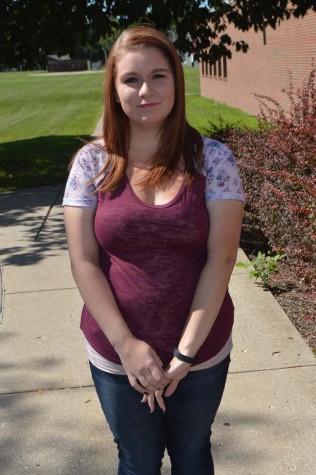Cards participate in a personality test
April 18, 2016
There are countless personality tests to be found on the internet. There are ones that offer to tell a person whether they are a day or night person, what character they are like in their favorite movie or show, what car fits their personality, the list is endless.
Dan Jones, AP psychology teacher, made the decision to have his students take a more clinical approach to finding out their personality’s. Seniors Sydney Dearth, Emma Friar and Tori Carr were able to take the test based on Carl Jung’s and Isabel Briggs’ Myers typological approach to finding out one’s true personality.
Some students may have been surprised to see the more clinical view of their personality, however for Carr she says that she wasn’t very surprised at all.
“After I read the description (of my personality type), it was spot on and it was weird,” Carr said.
After answering the 64 questions needed to determine one’s personality, the test then determines which personality out of 16 best fits. There are the options of being an ESTJ, ISTJ, ENTJ, INTJ, ESTP, ISTP, ENTP, INTP, ESFJ, ISFJ, ENFJ, INFJ, ESFP, ISFP, ENFP, or an INFP. With I and E standing for introverted or extroverted, S and N standing for sensing or intuitive, T and F for thinking or feeling and J and P for judging or perceiving. With the multiple choices the test tries to be as accurate as possible and Friar compliments it after getting her results.
“I would say mine was accurate because I like my alone time.” Friar said.
With knowing their personality some users may not like it and may want to change, but Carr says that for her, there wasn’t a significant change after finding out her true personality.
“I try to put myself out there more, but there wasn’t really any dramatic changes,” Carr said.
The test offers more than a simple description, going on to subgroups that one can explore to find out what jobs best fits their personality and what they should shy away from, what celebrities share their personality, their communication skills and their learning style. After exploring more Dearth read the description of what careers best fit her and she was surprised to find out that she should shy away from retail.
After looking back at their results and then at their relationships Carr and Dearth went on to say that they feel drawn to people like them and that 90 percent of their friends are similar to them. Although, they also have friends who are almost the exact opposite, which Carr and Dearth agreed was possibly because these friends have things in their personality that they themselves are lacking in their own.


